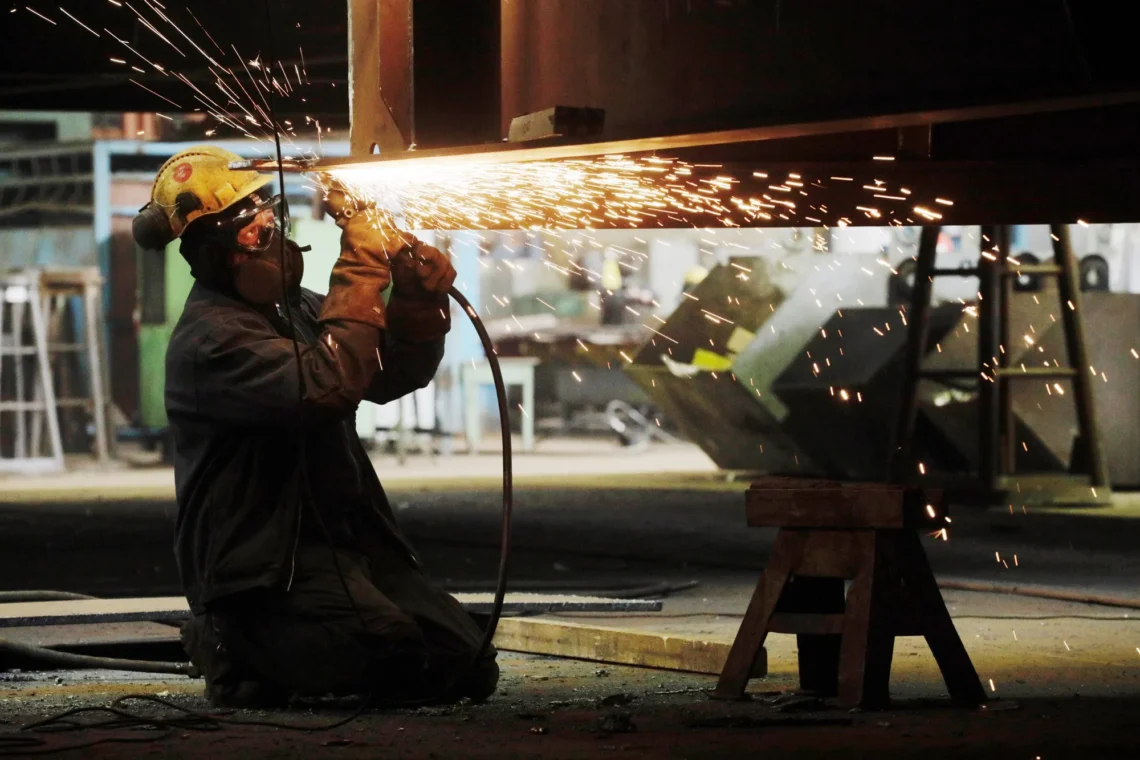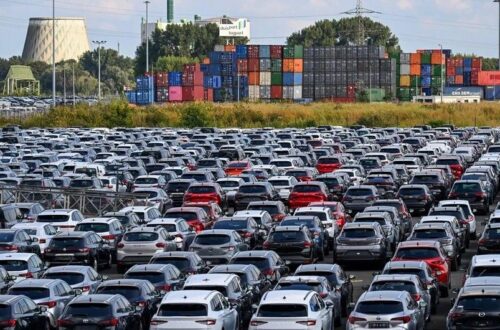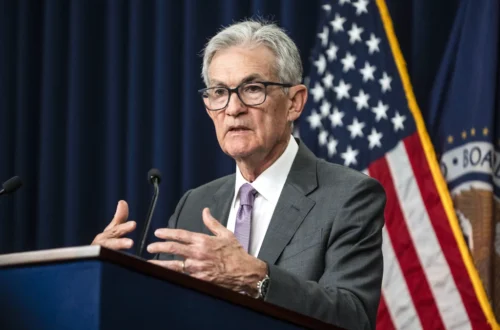The U.S. economy feels like it’s standing at a crossroads, with storm clouds gathering but no clear sign of a hurricane. Recent economic data paints a picture of slowing growth, rising unemployment in certain demographics, and the ripple effects of bold policy changes like tariffs and immigration reforms. But does this mean a crash is imminent? Not necessarily. Let’s dive into the numbers, the policies, and the human stories behind them to understand what’s happening and what it means for you.
Understanding the Current Economic Landscape
The economy is a complex beast, and right now, it’s showing signs of strain. Gross Domestic Product (GDP) growth has slowed to a 1.2% annualized rate in the first half of 2025, down from 2.8% in 2024, according to federal data. Job growth has also taken a hit, averaging just 35,000 jobs per month over the summer, a sharp decline from the 128,000 monthly average earlier in the year. Yet, experts like Mark Zandi from Moody’s Analytics caution that while the risks of a recession are rising, we’re not there yet. The economy might just be hitting a soft patch, not a cliff.
What Does “Dark Turn” Really Mean?
The phrase “dark turn” comes from recent analyses, like one from The New York Times, describing an economy that feels like a “hot August afternoon” with “lightning flashes on the horizon.” It’s poetic but grounded in real data: rising jobless claims, record-low home sales, and declining consumer spending on services. These indicators suggest a slowdown, but not necessarily a freefall. Think of it like a car losing speed on a hill—it’s not crashing, but it’s not cruising either.
Key Economic Indicators to Watch
To make sense of this, let’s break down the main indicators signaling trouble:
- GDP Growth: Down to 1.2% in 2025 from 2.8% in 2024, reflecting weaker economic activity.
- Job Growth: Averaged 35,000 jobs per month in summer 2025, compared to 128,000 earlier.
- Unemployment: Overall rate at 4.2%, but rising sharply for Black and young workers.
- Consumer Spending: Discretionary spending on services dropped 0.3% year-over-year, a rare decline historically tied to recessions.
- Inflation: Rising due to tariffs, squeezing real wage growth.
These numbers tell a story of an economy under pressure, but not yet in crisis. It’s like noticing cracks in your house’s foundation—concerning, but not a collapse.
The Role of Policy Changes in Economic Shifts
Policy decisions are shaking things up. President Trump’s tariffs, immigration curbs, and government spending cuts are creating uncertainty. These aren’t just abstract policies; they affect real people—small business owners, workers, and families. Let’s explore how.
Tariffs and Their Ripple Effects
Trump’s tariffs, imposed on dozens of countries and products like steel and cars, are raising costs for importers. This trickles down to consumers, who face higher prices for everything from cars to appliances. For example, a friend of mine who owns a small auto repair shop in Ohio told me he’s already paying 10% more for parts. That means higher repair bills for his customers, who are starting to delay non-essential fixes. Economists like Mark Zandi argue that tariffs are a key driver of the economic slowdown, as they weigh on growth and fuel inflation.
Immigration Policies and Labor Shortages
Mass deportations and stricter immigration rules have shrunk the labor force. In 2024, the labor force grew by over 1 million workers, but this year, it’s flatlined. My neighbor, a contractor, recently lost two of his best workers due to immigration crackdowns. He’s struggling to find replacements, and his projects are delayed. This isn’t just his story—it’s happening nationwide, especially in industries like construction and hospitality, where wage growth has slowed to 2.5% annually. A shrinking workforce means less economic output, and that’s a big reason GDP growth is stalling.
Government Spending Cuts
Federal spending cuts are another factor. With less money flowing into state and local governments, projects like infrastructure upgrades are on hold. I spoke to a city planner in Texas who said their budget for road repairs was slashed by 20%. Fewer projects mean fewer jobs, which means less money circulating in the economy. It’s a vicious cycle, but it’s not yet a death spiral.
Why a Crash Isn’t Imminent
Despite the gloomy data, a crash isn’t around the corner. The economy still has strengths: consumer spending, while weaker, hasn’t collapsed; corporate earnings remain robust; and the stock market has recovered from early August’s dip. Plus, the Federal Reserve is signaling interest rate cuts in September 2025, which could stimulate growth. It’s like a patient with a cold—not great, but not in the ICU.
Historical Context: Recessions Aren’t Always Predictable
Recessions are tough to forecast. In 2021, soaring inflation led to dire warnings, but no downturn materialized. Claudia Sahm, a former Fed official, notes that recessions often need a trigger—like a sudden loss of consumer confidence—that’s hard to predict. Right now, consumer sentiment is actually improving, even as hard data worsens. It’s a strange disconnect, but it suggests people aren’t panicking yet.
Comparison: 2025 vs. 2008
To put things in perspective, let’s compare today’s economy to 2008, when a real crash happened:
| Metric | 2025 | 2008 |
|---|---|---|
| GDP Growth | 1.2% annualized | -0.1% (Q3 2008) |
| Unemployment Rate | 4.2% | 6.1% (Sep 2008) |
| Job Growth | 35,000/month (summer 2025) | -403,000/month (Sep 2008) |
| Consumer Spending | Down 0.3% (services) | Down 3.7% (Q4 2008) |
| Stock Market | Recovered after August dip | Fell 40% by end of 2008 |
The numbers show 2025 is nowhere near 2008’s chaos. Job losses were catastrophic then, and consumer spending plummeted. Today’s slowdown is real, but it’s more like a speed bump than a cliff.
The Human Impact: Stories from the Ground
Numbers are one thing, but the economy is about people. I recently chatted with Maria, a single mom in Florida who works at a retail store. She’s noticed fewer customers coming in, and her hours have been cut. “It’s not like I’m broke,” she said, “but I’m definitely tightening my belt.” Her story reflects the broader trend of declining discretionary spending—people are skipping gym memberships, streaming services, and even Uber rides. These small choices add up, signaling caution but not despair.
Small Businesses Feel the Pinch
Small businesses are feeling the heat too. My friend’s auto shop isn’t the only one struggling. A Wells Fargo report notes that consumers are pulling back on services like auto repairs and air travel, down 4.7% year-over-year. This hurts small businesses that rely on steady customer spending. Yet, many owners are adapting—offering discounts or diversifying services to stay afloat. It’s tough, but it’s not a death knell.
Workers and Wages
For workers, the picture is mixed. While unemployment is low at 4.2%, real wage growth is slowing as inflation from tariffs bites. In hospitality, wages are growing at just 2.5% annually, barely keeping up with rising costs. I met a barista in Chicago who said her raise this year was “a joke” compared to her grocery bills. Still, she’s not quitting—she’s picking up extra shifts. This resilience is why the economy hasn’t tanked.
What Can You Do? Practical Steps for Navigating Uncertainty
If you’re worried about the economy, you’re not alone. But there are steps you can take to protect yourself, whether you’re a consumer, investor, or business owner.
For Consumers
- Budget Smarter: Cut back on non-essentials like dining out or subscriptions. Maria, the retail worker, switched to a cheaper phone plan and saved $30 a month.
- Build an Emergency Fund: Aim for 3–6 months of expenses. Start small—$50 a paycheck adds up.
- Shop Strategically: With tariffs raising prices, buy big-ticket items like appliances before costs climb higher.
For Investors
- Diversify: Spread investments across sectors to reduce risk. Avoid overexposure to AI stocks, which some fear are in a bubble.
- Watch the Fed: Interest rate cuts in September could boost stocks. Keep an eye on Fed Chair Jerome Powell’s speeches, like his upcoming Jackson Hole address.
- Stay Calm: Markets hate panic. The August dip was a blip, not a trend.
For Business Owners
- Adapt Pricing: Offer promotions to keep customers coming. My friend’s auto shop now bundles oil changes with tire checks to attract clients.
- Hire Creatively: With labor shortages, consider part-time or remote workers to fill gaps.
- Monitor Costs: Tariffs are raising input costs. Shop around for suppliers to stay competitive.
Pros and Cons of the Current Economic Climate
| Pros | Cons |
|---|---|
| Low unemployment (4.2%) supports stability | Tariffs are driving inflation, squeezing wages |
| Consumer spending still positive overall | Job growth slowing, especially in key sectors |
| Fed likely to cut rates, boosting growth | Labor shortages due to immigration policies |
| Corporate earnings remain strong | Declining discretionary spending |
This balance shows an economy that’s wobbling but not falling. The Fed’s moves and consumer resilience could keep it upright.
People Also Ask (PAA)
Here are real questions from Google’s “People Also Ask” section, answered concisely:
Is the U.S. economy headed for a recession in 2025?
It’s possible but not certain. GDP growth is down to 1.2%, and job growth is weak, but consumer spending and corporate earnings are holding up. Experts like Harry Holzer say it could be a temporary slowdown, not a recession.
How do tariffs affect the economy?
Tariffs raise costs for importers, leading to higher consumer prices and reduced spending. They’ve contributed to the 2025 slowdown, with services spending down 0.3%. However, they also encourage domestic production, which could offset some losses.
Why is consumer spending declining?
Consumers are cutting back on discretionary services like travel and repairs due to higher prices from tariffs and tighter budgets. This trend is historically tied to recessions but is modest so far.
What can I do to prepare for an economic downturn?
Build an emergency fund, reduce non-essential spending, and diversify investments. Businesses should adapt pricing and explore new hiring strategies to navigate labor shortages. See the practical steps section above for details.
FAQ Section
1. What are the signs of an economic slowdown?
Signs include slowing GDP growth (1.2% in 2025), reduced job growth (35,000/month), declining consumer spending, and rising unemployment for specific groups like Black and young workers.
2. Will the Federal Reserve cut interest rates in 2025?
Yes, the Fed is expected to start cutting rates in September 2025, as signaled by Chair Jerome Powell. This could stimulate growth but depends on incoming data.
3. How are tariffs affecting small businesses?
Tariffs are raising costs for goods like auto parts, forcing small businesses to either absorb losses or pass them on to customers, reducing demand. Many are adapting with promotions or new suppliers.
4. Is the stock market at risk of crashing?
There’s concern about an AI-driven stock bubble, but the market has recovered from August’s dip. A crash isn’t imminent, but a 15% drop could cut consumption significantly.
5. How can consumers protect themselves financially?
Focus on budgeting, building savings, and shopping strategically. Cutting subscriptions and buying big-ticket items before price hikes can help. See the “For Consumers” section above.
Tools and Resources for Staying Informed
To navigate this economy, you need reliable information. Here are the best tools and resources:
- Federal Reserve Economic Data (FRED): Free access to GDP, unemployment, and inflation data. Visit fred.stlouisfed.org.
- Bureau of Labor Statistics (BLS): Tracks jobs and wages. Check bls.gov for monthly reports.
- Moody’s Analytics: Offers economic forecasts. Explore moodysanalytics.com for insights.
- Google Finance: Monitor stock market trends at google.com/finance.
- Budgeting Apps: Tools like Mint or YNAB help manage personal finances. Download from mint.com or ynab.com.
Looking Ahead: Optimism Amid Uncertainty
The economy’s “dark turn” is real, but it’s not a death sentence. I think of my uncle, a farmer in Iowa, who’s weathered tough times before. He’s cutting costs and diversifying crops, just like businesses and consumers are adapting now. The Fed’s potential rate cuts, resilient corporate earnings, and your own smart choices can keep this storm from becoming a catastrophe. Stay informed, stay flexible, and don’t panic—the economy’s wobbling, but it’s still standing.



